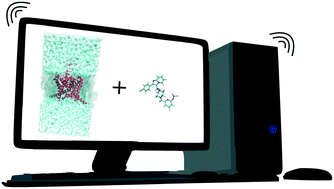Molecular dynamics: a powerful tool for studying the medicinal chemistry of ion channel modulators
Abstract
Molecular dynamics (MD) simulations allow researchers to investigate the behavior of desired biological targets at ever-decreasing costs with ever-increasing precision. Among the biological macromolecules, ion channels are remarkable transmembrane proteins, capable of performing special biological processes and revealing a complex regulatory matrix, including modulation by small molecules, either endogenous or exogenous. Recently, given the developments in ion channel structure determination and accessibility of bio-computational techniques, MD and related tools are becoming increasingly popular in the intense research area regarding ligand–channel interactions. This review synthesizes and presents the most important fields of MD involvement in investigating channel–molecule interactions, including, but not limited to, deciphering the binding modes of ligands to their ion channel targets and the mechanisms through which chemical compounds exert their effect on channel function. Special attention is devoted to the importance of more elaborate methods, such as free energy calculations, while principles regarding drug design and discovery are highlighted. Several technical aspects involving the creation and simulation of channel–molecule MD systems (ligand parameterization, proper membrane setup, system building, etc.) are also presented.



 Please wait while we load your content...
Please wait while we load your content...